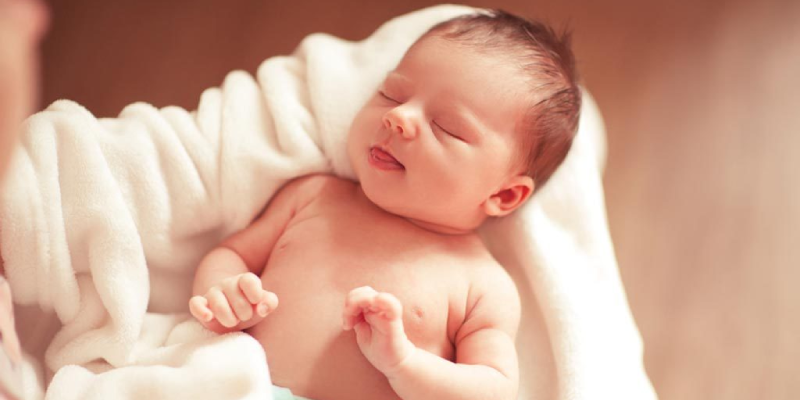

Even if the baby doesn't latch on, you can squeeze the yellowish colostrum—the precursor to real breast milk packed with immune-boosting nutrients—into his mouth.
Family and friends will want to visit as soon as possible, but you should keep them at bay so that you and your partner can spend time alone with your baby. Because a newborn is usually alert and receptive immediately after birth, it's the right time to bond, so look him in the eyes and talk to him. He knows your voice from being in your body and may find it soothing.
Family and friends will want to visit as soon as possible, but you should keep them at bay so you and your partner can spend time alone with your baby. Because a newborn is usually alert and receptive immediately after birth, it's the right time to bond, so look him in the eyes and talk to him. He knows your voice from being in your body and may find it soothing.
A few weeks before your due date, locate a certified child passenger safety expert to ensure your vehicle's car seat is installed correctly. Ask your partner to bring the seat to your hospital room when it's time to go home. The basics:
Nursing may be natural, but it can prove difficult for some women. These strategies will help.
Breastfeeding goes more smoothly for women who nurse within an hour of delivery. Don't be afraid to request help—from lactation specialists at Borneo Hospitals.
During the first six weeks, you must let your baby nurse whenever he wants. Establishing a feeding schedule too early can backfire by interfering with your milk supply. Don't worry about having enough milk—the more your baby sucks, the more you'll produce.
Your baby needs to have a proper latch to get enough milk and prevent your nipples from becoming damaged and sore. Before you put him on your breast, position him on his side so his belly is right up against yours. Then tickle his mouth with your nipple to encourage him to open wide; make sure he takes the entire nipple and a good portion of your areola in his mouth.
Though not essential, a glider, rocker, or cushy chair with an ottoman or footstool is helpful. Wherever you nurse, have plenty of pillows (for back support and to help position the baby properly at your breast), water, snacks, a good book, and the T.V. remote.
Drink at least eight glasses of liquids a day. Depending on your age, metabolism, and activity level, your calorie needs will likely be 2,200 to 2,400 daily. The good news: Breastfeeding moms tend to lose 1 to 4 pounds a month, even with the added calories.
Some women cannot breastfeed; others need to supplement with formula occasionally. Commercial formulas are largely the same—the U.S. Food and Drug Administration regulates formulas to ensure they're safe and contain the most important nutrients. Ask your pediatrician if she recommends a formula with added iron, D.H.A., or other nutrients. Your choice of powder, liquid, or concentrate primarily boils down to issues of cost and convenience.
Fear of an allergic reaction makes some parents reluctant to give their babies milk-based formula brands, but only 3 percent to 4 percent of infants have a true milk allergy. Surprisingly, soy formula may not be a good alternative for babies with a milk allergy because those babies may also have an intolerance to soy protein. However, soy-based formula is a good choice for parents who don't want their babies to eat animal products. Hypoallergenic formulas break down milk proteins so that they're more easily digested.
Follow these simple, doctor-recommended tips for keeping your baby clean and comfy.
Care tip: Wash your baby's face daily with mild baby soap.
Care tip: Wash your baby's face daily with mild baby soap
Care tip: Wash your baby's hair with a gentle baby shampoo no more than three times a week and gently brush out the scales daily using a baby hairbrush or soft toothbrush.
Care tip: Gently unclog nostrils with an infant-sized nasal bulb syringe or try the trauma-minimizing Nosefrida. To loosen mucus, insert saline solution with an eyedropper before suctioning.
Care tip: Limit baths to 10 minutes. Use a mild, fragrance-free soap and lukewarm water; liberally apply hypoallergenic skin cream immediately afterward. Stick to cotton clothing.
Care tip: Change diapers frequently. Rinse your baby's bottom with water during each change and blot dry. Avoid using wipes; they may irritate the skin. Barrier creams like petroleum jelly or white zinc oxide may help.
Care tip: Avoid covering the cord area with a diaper and stick to sponge baths until the stump detaches.
Care tip: Gently unclog nostrils with an infant-sized nasal bulb syringe or try the trauma-minimizing Nosefrida. To loosen mucus, insert saline solution with an eyedropper before suctioning.
Care tip: . Gently clean the genital area with warm water daily. Use petroleum jelly to protect the site and prevent the penis from sticking to a diaper.
Care tip: Don't worry about it—your baby's legs and feet will straighten anywhere from six to 18 months.
Care tip: Don't sweat it—this appearance is perfectly normal.
Sleep Close to Baby Being close to his mother regulates a baby's heart rate, immune system, and stress levels and makes breastfeeding easier, says James McKenna, Ph.D., director of the Mother-Baby Behavioral Sleep Laboratory at the University of Notre Dame in Indiana. "It also keeps the baby in lighter phases of sleep so he can practice arousing and going back to sleep, which is good in case of any problems, such as sleep apnea." It may also be linked to a decreased risk of sudden infant death syndrome(S.I.D.S.). A bedside or freestanding (but nearby) bassinet is a good option. Various experts, including the American Academy of Pediatrics, advise parents not to sleep with their babies because of the danger of suffocation.
Day vs. Night "Encourage him to switch," says Jodi Mindell, Ph.D., associate director of the Sleep Center, Children's Hospital in Philadelphia and author of Sleeping Through the Night: How Infants, Toddlers, and Their Parents Can Get a Good Night's Sleep (HarperCollins). "At night, keep the lights low and move slowly when you feed him. Be boring. Make sure he gets bright light in the morning, and keep him as busy as you can during the day. Make noise. Play with him." In other words, during the day, be interesting.
Bedtime Rituals "Sleep time should be consistent," Mindell says. "Each family has to develop its own routine, but doing the same activities in the same order every day helps the baby anticipate what will come next," Mindell suggests doing three or four winding-down activities for a total of 20 to 30 minutes; these can include massages, baths, lullabies, prayers, rocking, nursing, and reading.
Rocking baby "If you are doing this and your baby is sleeping all night, don't worry," says Jennifer Waldburger, L.C.S.W., co-owner of Los Angeles-based Sleepy Planet and author of the book and DVD The Sleepeasy Solution. "After about four months, if he is waking up, you probably need to let him do the last little bit of falling asleep on his own. You can still rock him as part of the wind-down process but put him down drowsy, not sleeping.
Baby Naps Look to your baby for his evolving schedule after about three months—before that, anything goes. "You don't have to be rigid," Mindell says, "but some structure helps both parents and baby. By age nine months, most babies naturally move to napping at around 9am and 2pm" But don't try to force a schedule on your baby for your convenience.
Crying it Out Wald Burger and other experts suggest that when he's about 5 months old, you can experiment with letting your baby cry a bit at night. (That does not mean letting him scream for hours.) Try starting with five minutes, Wald Burger suggests; if that's too hard to take, pick him up after three minutes. "It sounds cruel not to pick up a crying baby," she says, "but teaching babies how to calm themselves is kinder in the long run.
Sometime during your hospital stay, your baby will pass a thick black or dark-green substance called meconium; this is normal. Within a few days, a breastfed baby will begin having six to eight bowel movements daily; these will be soft and yellow-green and sometimes filled with seed like particles. If your baby is formula-fed, he will likely have one to two stools daily, thicker and yellow/tan in color. Unless your baby has signs of diarrhea, wide variations in color, consistency, and frequency are normal.
Fever can be a sign of serious illness, especially in a baby younger than 2 months old. Call your pediatrician if your newborn's rectal temperature hits 100.4° F; or 102° F if your baby is 2 months or older. Also, watch for other signs of illness: If your baby isn't acting right, eating or drinking, or is in pain, contact the doctor regardless of his temperature. A low-grade fever (99° F to 100° F) isn't harmful. If your baby shows no discomfort, trying to reduce it is unnecessary.
A temp of 101° F or higher might warrant medication. If your older baby's temperature is this high, giving him infants Tylenol may ease his discomfort and help him sleep and eat. (Never give aspirin to a child of any age.) Just remember that reducing a child's fever can pose a problem: When he begins to feel better, it can be challenging to assess how sick he is.
However, any fever of 101° F or higher that lasts more than two days, especially if your baby is coughing, warrants a call to the doc to rule out a urinary tract or other bacterial infections.